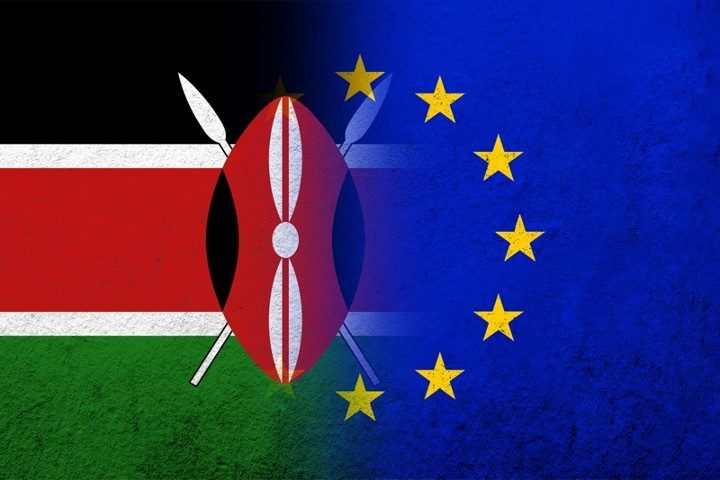
SINGAPORE — In March, the EU channeled $378 million through “green” subsidies to Kenya in an effort to entrench its relationship with the African country, one of the EU’s key African partners.
At a time when the African continent has become a hotbed of competing spheres of influence among Russia, China, and the West, Kenyan President William Ruto rallied for more EU funding for Kenyan green projects during his recent trip to Brussels.
Ruto, who narrowly won Kenya’s contested presidential election last August, had pledged to make his country one of Africa’s leaders in green energy in an apparent attempt to alleviate its energy woes due to soaring energy prices and ensuing political backlash.
At the Berlin Energy Transition Dialogue, Ruto said that “with the right level of investment, Africa can provide energy access for all by 2030 while reducing total emissions related to energy generation by approximately 80%.”
The European Investment Bank unveiled a plan to back hydrogen production in Kenya earlier this year. Thomas Östros, the bank’s vice president, and Professor Njuguna Ndung’u, Cabinet secretary of Kenya’s National Treasury and Economic Planning, signed the Joint Declaration on Renewable Clean Hydrogen after talks with Ruto.
Kenya has been regarded as a dependable Western ally in East Africa, countering China’s economic clout in the region. Notably, Kenya has been outspoken in denouncing Russian actions in Ukraine in order to obtain more Western aid.
The EU is the largest market in the world for Kenya’s exports, and is also a major source of funding for Kenya’s transition toward a green economy.
The EU-Kenya alliance exemplifies the global aspect of the EU’s “green transition deal,” as well as green subsidies as an instrument of foreign policy. The EU has justified intertwining its foreign policy with green policies on the premise of Article 2 of the Lisbon Treaty on the “sustainable development” of the Earth.
Opponents of the EU’s globalist and woke policies may call into question the idea of European taxpayers funding projects in foreign jurisdictions. After all, even EU member states face internal divisions with regard to the bloc’s green agenda.
For instance, Germany’s three-party coalition is facing strife over green issues. German Chancellor Olaf Scholz reportedly conducted a long Cabinet meeting on March 26 to try to ease tensions between his Green and centrist-liberal Free Democratic Party (FDP) coalition partners.
The Greens maintain that Germany should do more to address climate change, while the FDP lambastes the Greens for pushing expensive policies.
A major point of disagreement is Green Economy Minister Robert Habeck’s idea for German citizens to replace oil and gas heating systems in their homes by 2024. This plan is estimated to cost regular German households €13,000 (a little over $14,000) per installation.
When the German media got hold of the heating regulation plans, Habeck, rather than assuming responsibility, slammed his coalition partners for the leak and stated, “It cannot be that in a progress coalition only one coalition partner is responsible for progress and the others [are] preventing progress.”
FDP’s Wolfgang Kubicki responded that Habeck believed “that the state, the leader, the chosen one, knows better than the people what is good for them.”
However, Scholz reiterated that he was “confident that we are now making a small leap forward” in light of the recent agreement between Berlin and Brussels to exclude cars that run on synthetic fuels from the EU’s contested 2035 combustion-engine ban.
Given the failed Berlin environmentalist referendum last month, as well as national transport strikes owing to skyrocketing energy and food prices, it remains to be seen how the German government will justify its green agenda in light of domestic economic woes.
Not enough voters in the referendum backed the motion to make Berlin “carbon neutral” by 2030. Although a small majority, 50.9% of voters supported the motion, insufficient voters endorsed it for it to become law.
To pass, the notion would have needed majority support as well as the backing of at least 25% of the eligible electorate. Approximately 442,000 people voted in favor and around 423,000 against, among 2.4 million eligible voters in Berlin.
City officials had encouraged voters to reject the proposal, proposed by environmental groups such as Climate Reset Berlin in a public petition, stating that such a notion was unattainable and unrealistic.
Alas, as is usually the case in the EU, the bloc’s supranational priorities — such as its green agenda — will most likely be pursued by Germany in spite of the domestic challenges.
European Commission President Ursula von der Leyen has said that cutting Europe’s overreliance on China for key raw materials is a huge priority for Brussels. “If we want to be independent, we urgently have to strengthen and diversify our supply chains with like-minded partners,” she told European lawmakers in March.
The United States and the EU hope to conclude the Global Arrangement on Sustainable Steel and Aluminum before the expiration of a bilateral tariff truce in October.
Additionally, the EU’s Net-Zero Industry Act, proposed on March 16th, outlines plans to balance its carbon emission goals while shielding European industry from foreign competition. This protectionist act comes amid increased trade tensions between China and America over influence of the environmental sector.
The Net-Zero Industry Act outlines protections for green manufacturers, such as enhanced investment, reduced regulations, and worker training programs. It includes the creation of “Net-Zero Industry Academies” and a European Hydrogen Bank to take charge of hydrogen fuel production, with the aim to produce 40 percent of its green technology domestically by 2030.
Clauses within the act will compel governments to consider “security of supply” when buying non-EU goods, such as the origin of major components. Under the terms of the act, individual governments will have to evaluate their reliance on non-EU green technology, as with current domestic content requirements in America.



